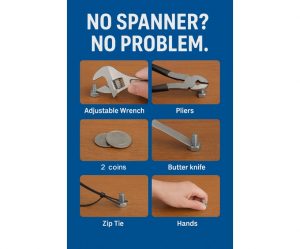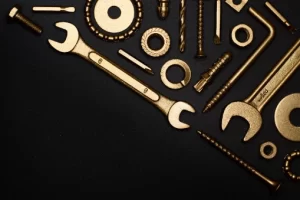Development History of Wrench Meaning
Introduction
Welcome to the fascinating world of wrenches and adjustable wrenches! In this article, we will explore the development history of these essential tools and delve into their impact on various industries. From their humble beginnings to their current state-of-the-art designs, wrenches have come a long way in revolutionizing the way we work with bolts, nuts, and other threaded fasteners.
Throughout the years, wrenches have undergone significant advancements in technology, making them more efficient, versatile, and user-friendly. With the introduction of adjustable wrenches, the need for multiple fixed-size wrenches has been eliminated, providing a convenient solution for various bolt and nut sizes.
In this article, we will discuss the evolution of wrenches and adjustable wrenches separately, highlighting their unique features and functionalities. We will also explore the impact of these tools on different industries, showcasing their indispensable role in manufacturing, construction, automotive, and more.
Moreover, we will delve into the current trends in wrench design, including ergonomic handles, improved grip, and innovative materials. These advancements not only enhance the user experience but also contribute to increased productivity and safety in the workplace.
As we look to the future, we will discuss the potential advancements and innovations that lie ahead for wrenches. With the rapid pace of technological advancements, we can expect further improvements in functionality, durability, and precision.
So, join us on this exciting journey as we uncover the fascinating development history of wrenches and adjustable wrenches. Whether you are a professional tradesperson or a DIY enthusiast, this article will provide valuable insights into the evolution of these indispensable tools. Let’s dive in and explore the world of wrenches.
Ancient Roots of Torque Tools
The earliest wrenches were rudimentary devices primarily used for turning bolts. In ancient civilizations, people crafted basic wrenches from materials such as wood or metal, employing lever principles to rotate bolts. These early tools were essential for basic mechanical tasks but lacked the sophistication of modern counterparts.
The Industrial Revolution Propels Change
With the advent of the Industrial Revolution, the mechanical industry witnessed unprecedented growth, leading to increased demands for more efficient tools. In the early 19th century, wrenches began evolving into standalone tools with more refined structures, offering enhanced usability. The emergence of the adjustable wrench followed, providing a significant leap forward in mechanical maintenance.
Innovations in Adjustable Wrenches
The introduction of the adjustable wrench marked a revolutionary step in wrench technology. Unlike traditional wrenches, the adjustable wrench featured a design with a customizable jaw, capable of accommodating nuts and bolts of varying sizes. This innovation significantly improved the efficiency of workers while reducing the burden on them. The continuous refinement of adjustable wrenches made them indispensable across various industries, becoming an essential tool in the realm of mechanical maintenance.
Frequently Asked Questions (FAQ)
Q1: What is the difference between a wrench and an adjustable wrench?
A1: A wrench is a hand tool used for rotating bolts or nuts, while an adjustable wrench is a type of wrench with a customizable jaw, allowing it to adapt to different sizes of nuts and bolts.
Q2: How does the material of a wrench impact its usage?
A2: The material of a wrench directly influences its durability and lifespan. In general, high-quality alloy steel wrenches are more durable and capable of handling higher levels of torque.
Q3: What is the correct way to use an adjustable wrench?
A3: When using an adjustable wrench, ensure the jaw is set to the correct width, then securely place it on the bolt or nut. Rotate the handle until the desired torque is achieved.
Q4: What are the maintenance tips for adjustable wrenches?
A4: Regularly clean any dirt or debris from the surface of the adjustable wrench, and avoid storing it in damp environments. After use, it’s advisable to store the wrench in a dry and well-ventilated area to prevent rust.
Conclusion
The wrench and adjustable wrench have undergone a fascinating journey through the pages of human history, reflecting the continuous advancement of tool technology. From primitive tools in ancient times to the highly precise adjustable wrenches of today, their evolution mirrors the progress of industrial technology. The constant innovation in these tools has provided robust support for both industrial and personal endeavors, solidifying their status as indispensable tools in the field of mechanical maintenance.



